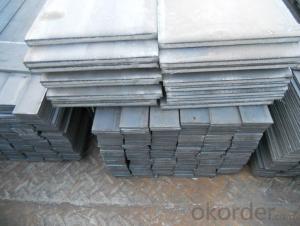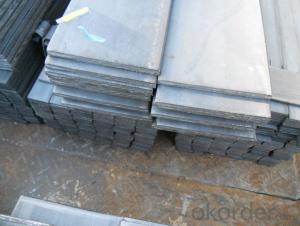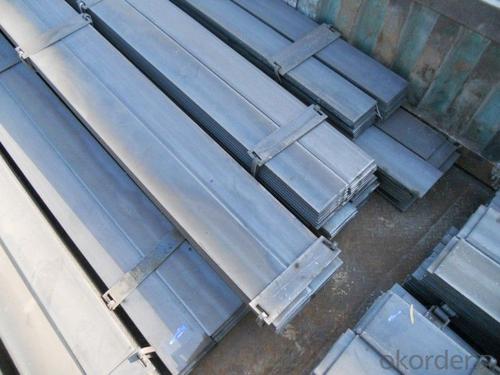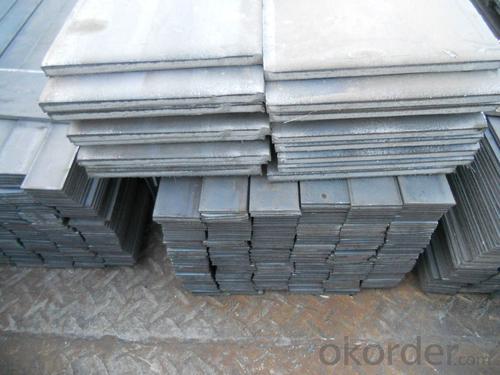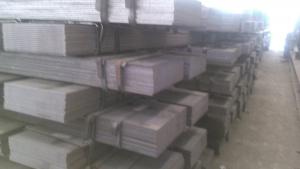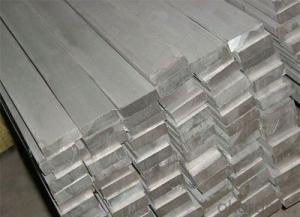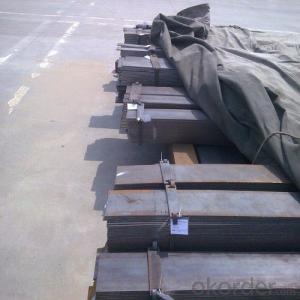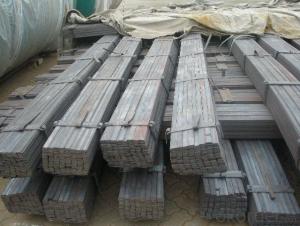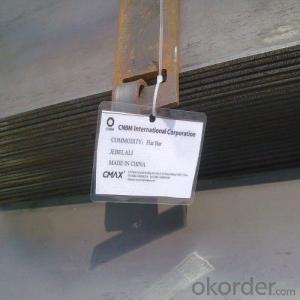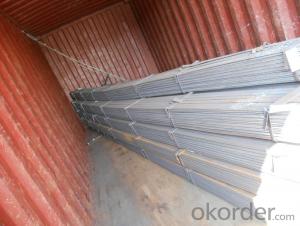Hot Rolled Seel Flat Bars with Material Grade Q235
- Loading Port:
- Tianjin
- Payment Terms:
- TT OR LC
- Min Order Qty:
- 25 m.t.
- Supply Capability:
- 10000 m.t./month
OKorder Service Pledge
OKorder Financial Service
You Might Also Like
Product Description:
OKorder is offering high quality Flat Bar at great prices with worldwide shipping. Our supplier is a world-class manufacturer of steel, with our products utilized the world over. OKorder annually supplies products to European, North American and Asian markets. We provide quotations within 24 hours of receiving an inquiry and guarantee competitive prices.
Product Applications:
Flat Bars are ideal for structural applications and are widely used in the construction of buildings and bridges, and the manufacturing, petrochemical, and transportation industries.
Product Advantages:
OKorder's Flats Barare durable, strong, and resist corrosion.
Main Product Features:
· Premium quality
· Prompt delivery & seaworthy packing (30 days after receiving deposit)
· Corrosion resistance
· Can be recycled and reused
· Mill test certification
· Professional Service
· Competitive pricing
Product Specifications:
Manufacture: Hot Rolled
Grade: Q195 – 235
Certificates: ISO, SGS, BV, CIQ
Length: 6m – 12m, as per customer request
Packaging: Export packing, nude packing, bundled
Chemical composition of Q235
Alloy No | Grade | Element(%) | ||||
C
| Mn
| S
| P
| Si
| ||
Q235
|
B
|
0.12—0.20 |
0.3—0.7 |
≤0.045 |
≤0.045
|
≤0.3
|
Physical properties of Q235
Alloy No | Grade | Yielding strength point(Mpa) | Tensile strength (Mpa) | Elongation after fracture(%) | ||||||
Thickness (mm) | Thickness (mm) | |||||||||
≤16 | >16--40 | >40--60 | >60--100 | ≤16 | >16--40 | >40--60 | >60--100 | |||
≥ | ≥ | |||||||||
Q235 |
B |
235 |
225 |
215 |
205 |
375--500 |
26 |
25 |
24 |
23 |
FAQ:
Q1: How soon can we receive the product after purchase?
A1: Within three days of placing an order, we will begin production. The specific shipping date is dependent upon international and government factors, but is typically 7 to 10 workdays.
Q2: How do we guarantee the quality of our products?
A2: We have established an advanced quality management system which conducts strict quality tests at every step, from raw materials to the final product. At the same time, we provide extensive follow-up service assurances as required.
Q3: The products are invoicing on theoritical weight or on actual weight basis ?
A3: We can do it in both manners, according to buyers' requiremnet.
Images:
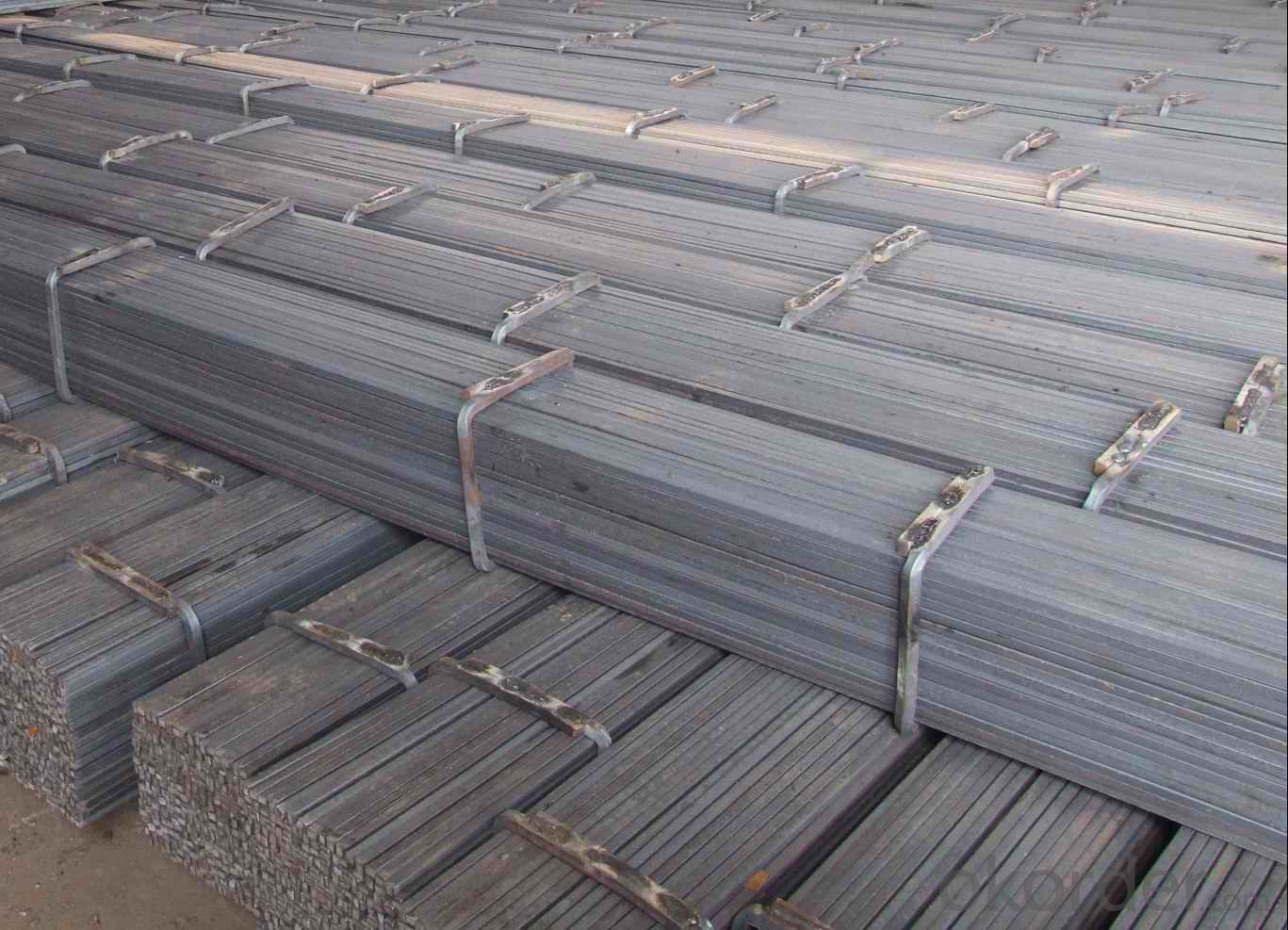
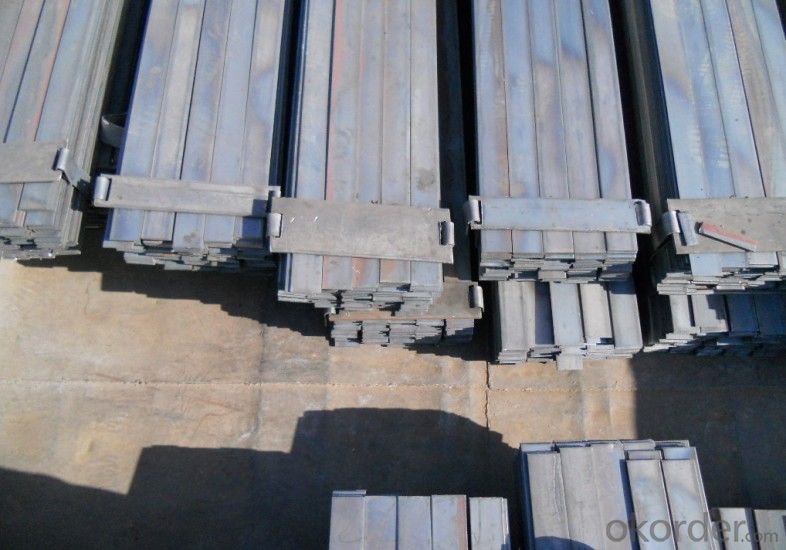
- Q: What are the standard lengths of steel flat bars?
- The lengths of steel flat bars can differ depending on the manufacturer and project specifications. Nonetheless, there are widely utilized standard lengths in the industry. These standard lengths usually fall between 6 and 20 feet. Longer lengths, like 24 feet or custom sizes, may be available from certain manufacturers, but they are not as commonly employed. It should be noted that steel flat bars can be cut and tailored to meet specific project requirements.
- Q: How do you determine the dimensions of a steel flat bar?
- To determine the dimensions of a steel flat bar, you need to measure its width, thickness, and length using a measuring tape or a caliper.
- Q: What is the minimum yield strength of a steel flat bar?
- The minimum yield strength of a steel flat bar depends on the grade of steel being used. Different grades of steel have different minimum yield strengths. For example, a common grade of steel used for flat bars is A36, which has a minimum yield strength of 36,000 pounds per square inch (PSI). However, there are higher strength grades available, such as A572, which has a minimum yield strength of 50,000 PSI. It is important to consult the specifications and requirements for the specific project or application to determine the appropriate grade and minimum yield strength for a steel flat bar.
- Q: Are steel flat bars suitable for load-bearing structures in bridges?
- Yes, steel flat bars are suitable for load-bearing structures in bridges. Steel flat bars are commonly used in bridge construction due to their high strength and durability. They can withstand heavy loads and provide excellent structural support. Additionally, steel flat bars can be easily welded or bolted together, allowing for efficient construction and easy customization to meet specific bridge design requirements. These bars are also resistant to corrosion, which is crucial for bridge structures exposed to outdoor elements. Overall, steel flat bars are a reliable and cost-effective choice for load-bearing structures in bridges.
- Q: Earthing flat steel and earthing main line
- The flat steel is connected to the ground system, and the grounded line is connected to the protected equipment
- Q: Can steel flat bars be used for manufacturing sports equipment or accessories?
- Yes, steel flat bars can be used for manufacturing sports equipment or accessories. Steel is a strong and durable material that can provide the necessary strength and stability needed for various sports equipment such as weightlifting bars, hockey sticks, golf club shafts, or even bike frames. The flat bars can be shaped, cut, and welded to create different designs and structures required for specific sports activities.
- Q: Lightning protection grounding, what is called three surface welding?
- Lightning protection, grounding, the three sides of the welding:The buried depth of the grounding body shall not be less than 1m at the top, and the steel pipe grounding body shall be vertically configured.The length of the vertical grounding body shall not be less than 2.5m, and the spacing between them shall not be less than 5m.
- Q: What are the different types of surface finishes for copper steel flat bars?
- There are several different types of surface finishes available for copper steel flat bars, including polished, brushed, mill finish, and patina finish.
- Q: What is the difference between a steel flat bar and a steel square tube?
- A steel flat bar and a steel square tube are both forms of steel materials commonly used in construction and manufacturing. However, they differ in their shape and structural properties. The main difference lies in their cross-sectional shape. A steel flat bar has a rectangular shape with two flat parallel surfaces and straight edges, while a steel square tube has a hollow square shape with four equal sides and thicker walls. In terms of structural properties, a steel flat bar is typically used for its strength in resisting bending or flexing. It is often used as a support or reinforcement in construction projects, such as for framing or bracing purposes. On the other hand, a steel square tube offers greater strength and rigidity due to its hollow structure. It is commonly used as a structural component for load-bearing applications, such as in building frameworks, machinery, or in the manufacturing of furniture. Additionally, the manufacturing process for these two steel forms can differ. Steel flat bars are usually produced by hot rolling, which involves heating the steel billet and passing it through a series of rolling stands. This process results in a flat shape with smooth surfaces. In contrast, steel square tubes are typically manufactured through a process called electric resistance welding (ERW), where a flat strip of steel is formed into a tube shape and then welded along the edges. In summary, while both steel flat bars and steel square tubes are made of the same material, their shape and structural properties make them suitable for different applications. Steel flat bars are commonly used for support and reinforcement purposes, while steel square tubes are preferred for load-bearing applications due to their greater strength and rigidity.
- Q: 80 * 80 * 4 galvanized flat steel is what specifications?
- Galvanized square pipe.Specification: 80 * 80 * 4 is the dimension of galvanized square pipe. That is to say, the length and width of the inner diameter of the nozzle are 80mm, and the thickness of the tube wall is 4mm.
Send your message to us
Hot Rolled Seel Flat Bars with Material Grade Q235
- Loading Port:
- Tianjin
- Payment Terms:
- TT OR LC
- Min Order Qty:
- 25 m.t.
- Supply Capability:
- 10000 m.t./month
OKorder Service Pledge
OKorder Financial Service
Similar products
Hot products
Hot Searches
Related keywords


